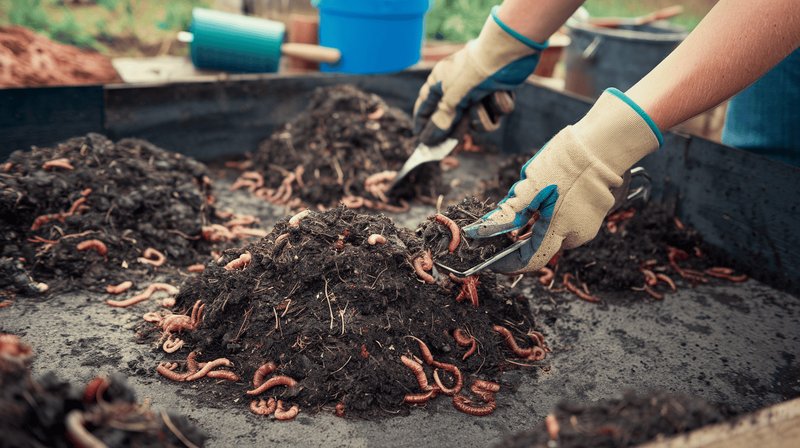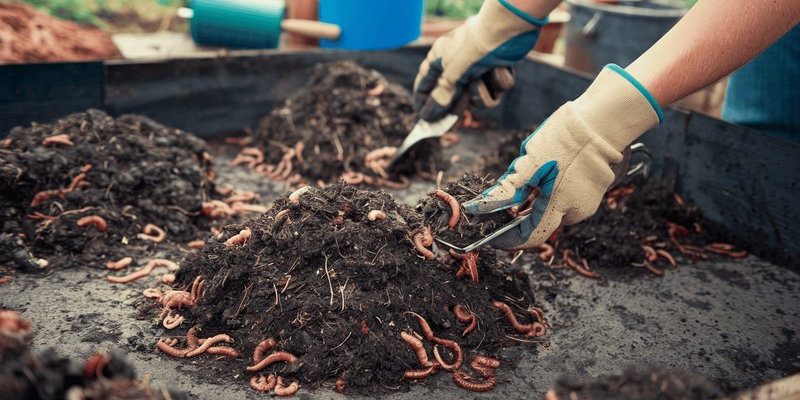
Inchworms are the larval stage of several types of moths, and they’re known for their unique way of moving, which looks like they’re measuring the ground. They are often associated with the *Geometer moth* family. Whether you’re a teacher looking for a classroom project or a nature enthusiast wanting to explore the lifecycle of these little critters, I’ve got you covered. Let’s dive into how to raise inchworms, from finding their eggs to watching them emerge as full-fledged moths.
Understanding Inchworms: Lifecycle and Habitat
Before you jump in, it’s important to understand the lifecycle of the inchworm. Inchworms start as eggs, typically laid on leaves or in soil, and they go through several stages before becoming adults. This process is known as metamorphosis, and it’s pretty cool to observe.
Inchworms generally hatch in the springtime, when they’ll eat tender leaves to grow. They’re quite picky eaters, favoring specific types of trees and plants. Common hosts include oak, apple, and cherry trees. As they munch away, they grow bigger—almost double their size—before moving on to the next stage of their lifecycle.
So, why does it matter? Understanding their lifecycle helps you create an environment that supports their growth. This means providing them with the right food and habitat so your inchworms can thrive as they grow.
Finding Inchworm Eggs
You might be wondering where to actually find inchworm eggs. The good news is, they’re often found in places you might already frequent—like your garden or local park. Inchworms usually lay their eggs during late summer to fall, and you can spot them as small, round, or oval-shaped clusters on leaves.
When searching for inchworm eggs, look for:
- Clumps on the undersides of leaves
- Clusters on tree trunks
- Spots near known inchworm host plants
Once you find the eggs, gently collect them with a soft brush or your fingers. Just be careful not to damage them! A fun little tip: consider putting your eggs in a jar with a breathable lid, like a piece of mesh or paper held on with a rubber band. This keeps them safe while allowing fresh air in.
Caring for Inchworm Eggs
After you’ve gathered your inchworm eggs, it’s time to focus on how to care for them. You’ll want to create a cozy environment for them to hatch and grow. The jar should mimic their natural habitat as closely as possible.
Here are some essential steps for caring for your inchworm eggs:
1. **Location**: Keep the jar in a warm spot, but out of direct sunlight. A temperature range of about 70–80°F is ideal.
2. **Humidity**: You can lightly mist the jar with water every few days to maintain humidity. Just don’t drown the eggs—too much water can cause them to mold.
3. **Food source**: If your eggs hatch and you see tiny inchworms, you’ll need to provide them with fresh leaves. Make sure to identify the right plant they prefer. If they started as *Geometer moth* eggs, offer them small leaves from trees like oak or apple.
By following these steps, you’ll set your inchworm eggs up for a successful hatch.
Watching Your Inchworms Hatch
The waiting game can be the hardest part, but the moment your inchworm eggs hatch, you’ll be in for a treat! Typically, it takes about 7 to 10 days for them to hatch, depending on temperature and humidity.
Once they emerge, these little critters will look like tiny, vibrant green caterpillars. It’s amazing to watch them stretch and explore their new home! You might notice them crawling around, munching on leaves, and even playing hide-and-seek among the foliage.
As they eat and grow, their bodies will go through various molts. Each time they shed their skin, they become a bit larger and more defined. It’s like they are preparing for their next big adventure!
Feeding Your Inchworms
Feeding your inchworms is crucial to their development. As mentioned earlier, they prefer certain types of leaves. Here are some tips on feeding them:
– **Fresh leaves**: Always provide fresh leaves daily. Remove any brown or wilted leaves to prevent mold or illness.
– **Variety**: Experiment with different types of leaves if you’re unsure what they prefer. You might find they love oak, but refuse to touch other plants.
– **Quantity**: Make sure to offer enough food. These little guys can eat a surprising amount for their size!
Remember, healthy inchworms will grow fast and may even reach up to 2 inches long by their final molt.
Creating a Comfortable Habitat for Growth
As your inchworms grow, it’s essential to create an enriching habitat. Here’s how you can do this effectively:
– **Container**: Use a well-ventilated container, like a terrarium or an aquarium, to give them space to move and grow.
– **Bedding**: Add some soft bedding material, like paper towel strips, to provide a cozy ground base. This also helps with moisture retention.
– **Space**: Avoid overcrowding. As they grow, consider transferring them to a larger container if needed. A spacious home prevents stress and allows them to thrive.
A happy inchworm is a healthy inchworm! By ensuring they have a comfortable space, you’ll witness their growth firsthand.
Preparing for the Next Stage: Cocooning
After a few weeks of munching on leaves and growing, your inchworms will be ready to move into the next stage of their life—cocooning. This is when the magic of metamorphosis really starts to take shape!
Here’s how to help them through this process:
– **Space to pupate**: Provide them with a few twigs or pieces of bark where they can anchor themselves to build their cocoons.
– **Low disturbance**: Try not to handle them too much during this stage. They need peace and quiet to form their cocoons.
– **Humidity**: Keep an eye on the humidity, as it can help them create their cocoons properly.
Once they’ve formed their cocoons, you may not see them for a few weeks. But don’t worry! Inside, they’re transforming into beautiful moths.
Watch for Adult Moths
After several weeks in their cocoons, you should see signs of life! Moths will start to emerge, and this is the final stage of the inchworm lifecycle. The transformation from inchworm to adult moth is nothing short of astonishing.
Here’s what to expect:
– **Time to emerge**: Emerging typically takes 1-2 hours.
– **Fragile wings**: Once they come out, their wings will appear crumpled. They’ll need some time to pump them up and dry out before they can fly.
– **Release or observe**: You can either observe your adult moths for a few days or release them into your garden, where they can continue the cycle. Just make sure they have a safe place to land and feed.
Seeing the entire transformation from eggs to adult moths is a truly rewarding experience!
In conclusion, raising inchworms from eggs to adults is a delightful journey into the world of nature. It offers valuable lessons in patience, care, and respect for life cycles. Whether for a project or just for fun, inchworms can bring joy and education to your home or classroom. So go ahead—give it a try, and enjoy every squirmy moment!

